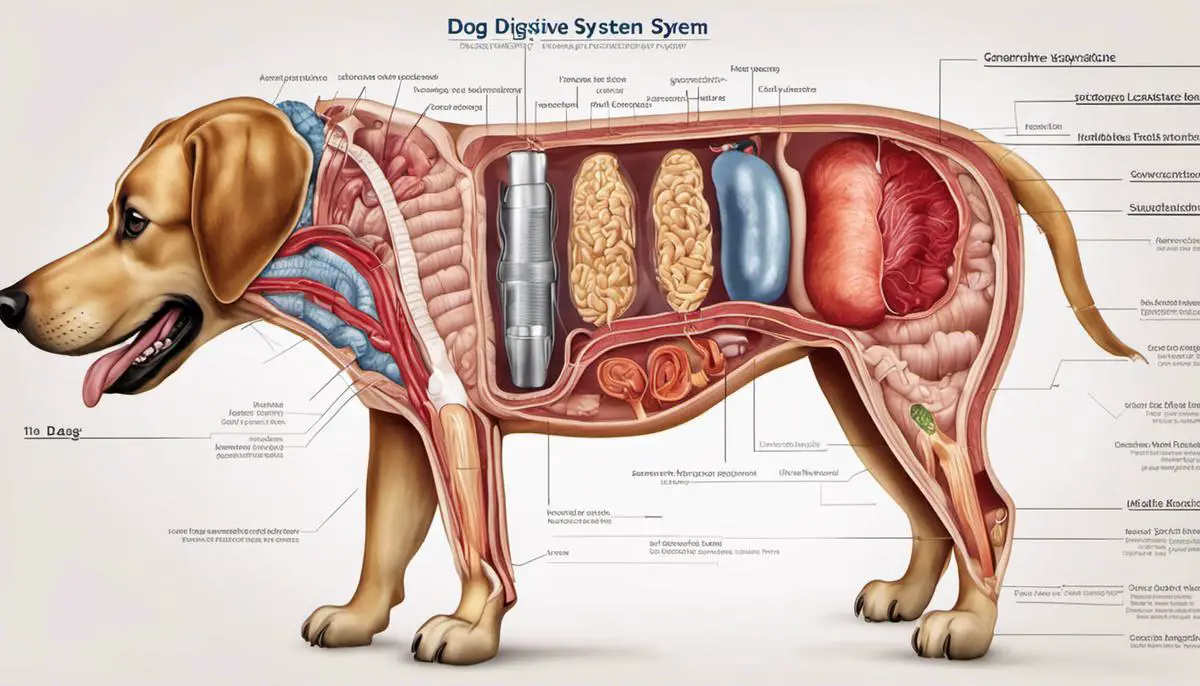The Unlikely Duo: Dogs and Pineapple Explained
We all love treating our pets, and what better way to spoil them than with some tasty and healthy snacks? Often, we wonder if traditional human foods are safe for our dogs to consume – one such food being pineapple. This tropical and juicy fruit, while relished by human beings alike, does raise questions about its suitability for our canine friends. Addressing this question, let’s explore the potential benefits and possible hazards of feeding pineapple to dogs. We will further delve into the intricacies of their digestion and metabolism of the fruit. To make things more interesting, this discussion will also serve up some fun and nutritious pineapple-based recipes suitable for dogs.
Can Dogs Eat Pineapple?
Understanding If Pineapple is Safe for Dogs and Its Nutritional Value
Pineapple, a tropical fruit known for its tangy sweetness, is safe for our dog companions to eat sparingly. This vitamin-rich fruit, filled with essential nutrients like vitamin C, vitamin B6, and folate, has multiple health benefits for dogs. The abundance of manganese in pineapple facilitates the development of robust bones and connective tissues – especially beneficial for dogs. Not to mention, this juicy fruit is an excellent source of dietary fiber, potentially improving your dog’s digestion.
In addition to its nutritional value, pineapple’s high-water content can be crucial in keeping your pets well-hydrated, potentially preventing them from overheating during hotter months. An intriguing yet known bonus is that consuming a small portion of pineapple might discourage dogs from eating their feces, a behavior known as coprophagia.
However, feeding pineapple to dogs does come with potential hazards. For instance, the fruit’s central core, although not toxic, could pose a choking danger or digestive obstruction, mainly if consumed by smaller dogs. It should also be noted that pineapples contain naturally occurring sugars which, if over-consumed, could lead to obesity and other health problems. For this reason, the American Kennel Club advises that fruits comprise no more than 10% of a dog’s daily caloric intake, and serving sizes should be tailored according to a dog’s weight and size. Furthermore, the citrus acid present in pineapples could cause mild stomach upset if eaten in large quantities.
Therefore, when giving your dog pineapple, it’s vital to feed them fresh produce cut into suitable-sized portions and avoid canned pineapple due to added sugars and preservatives—always remember to consult with a vet before including any new food to your dog’s diet.

The Digestion and Metabolism of Pineapple in Dogs
The Fundamentals of a Dog’s Digestive System
Compared to a human’s digestive system, a dog’s is built distinctly to efficiently process proteins and fats, often derived from meat-based foods. Their bodies are conditioned to digest food high in protein and moderate to low in carbohydrates. In the canine digestive system, food first enters via the mouth and gets broken down in the stomach through various enzymes. It then journeys to the small intestine where absorption of nutrients occurs. Finally, the undigested waste is eliminated through the large intestine.
Canine Fruit Digestion
Contrary to popular stereotypes, dogs are not solely carnivorous and can process and absorb nutrients from fruits and vegetables. Pineapple is one such fruit that is safe for dogs to eat in moderation. Offering a range of vitamins and mineral content, including Vitamin C and Manganese, pineapple is somewhat beneficial as a part of a omnivorous diet for dogs.
However, the rate of digestion for fruit in dogs is considerably slower when compared to their regular dog food. Dog food contains higher amounts of protein and fats that their bodies are designed to process more effectively, allowing for a quicker digestion process and nutrient absorption. Despite the slower digestion rate, the monosaccharide sugar called fructose found in pineapple can easily be absorbed by the intestines.
Nutrient Absorption and Use of Pineapple
When a dog consumes pineapple, their body is able to absorb a number of nutrients from the fruit. These include dietary fiber, which is beneficial for their digestive health, as well as vitamins and minerals such as Vitamin C, Vitamin B6, and Manganese which contribute to overall health and wellbeing. However, like all fruits, the nutrient content in pineapple is most effectively processed when consumed as part of a balanced diet.
It should be noted that while dogs can benefit from the nutrients in pineapple, their bodies are not fully equipped to process high quantities of some fruit nutrients. As a result, feeding your dog excessive amounts of pineapple might lead to gastrointestinal upset due to the high levels of fruit acids.
Impact of Sugar from Pineapple on a Dog’s Weight
The sugar in pineapple is primarily fructose, a naturally occurring sugar that dogs can metabolize reasonably well. However, excess consumption of fructose can lead to increased caloric intake and potential weight gain in dogs, just as it would in humans. Despite the fact that fruits like pineapple are generally healthier than processed snacks, their sugar content still contributes to a dog’s overall daily calorie intake.
To summarize, pineapple is a nutritious snack for dogs when offered in moderation. It should be remembered, however, that due to a slower digestion rate and possibilities of weight gain from high sugar content in fruits, it’s critical to monitor your dog’s intake. Regular dog food, specially designed to cater to canine nutritional requirements, should always be their main source of food.

Fun and Healthy Pineapple-Based Recipes for Dogs
Pineapple: A Potentially Beneficial Occasional Treat for Dogs
When given sparingly, pineapple can provide an enjoyable and beneficial addition to your dog’s diet. It’s high in essential nutrients such as Vitamin C, Vitamin A, and dietary fiber, which can all contribute towards your dog’s overall health by improving their immune system, enhancing eyesight, and promoting a healthier digestive tract. An enzyme called bromelain, found in pineapples, is especially useful as it aids digestion and helps reduce inflammation.
It is important, however, to ensure that pineapple does not constitute a significant portion of your dog’s diet. All treats, including pineapple, should only account for about 10% of their daily caloric intake to maintain a balanced diet. High fiber and sugar contents mean that overindulgence in pineapple could lead to uncomfortable side effects, such as stomachaches, diarrhea, or vomitting.
Choosing the Right Pineapple Option
Choosing whether to serve fresh or canned pineapple to your dog might depend on convenience, but each option has its pros and cons. Fresh pineapple is best as it isn’t soaked in syrup or added sugars, unlike many canned options. But, if you’re opting for canned pineapple, look for those packed in their natural juices without any added sugars.
Never serve your dog the pineapple core or skin as these can pose a choking hazard or cause intestinal blockage. Always serve pineapple in small, manageable chunks appropriate for your dog’s size.
Cooked vs. Raw Pineapple
Cooked pineapple, particularly grilled pineapple, could be a great option for dogs as the grilling process can enhance the sweetness naturally, making it more appealing for your pup. However, ensure the pineapple chunks are grilled without added sugars, salt, or seasoning.
Raw pineapple, being a natural and fresh choice, is a fine option but remember to cut it into bite-sized pieces to prevent choking.
Pineapple-Based Dog Treat Recipes
Pineapple can be mixed into dog treats and meals for an extra health kick. For example, consider making ‘Fruity Frozen Yogurt Treats’. Mix together chopped pineapple, blueberries, and natural, non-fat yogurt, portion this mixture into an ice cube tray, and freeze. These refreshing treats are especially wonderful during hot weather.
Alternatively, try ‘Doggie Smoothie Bowls’. Blend together a small amount of pineapple, a scoop of peanut butter, a spoonful of plain Greek yogurt, and a splash of unsweetened almond milk until smooth. Pour into a bowl and top with a sprinkling of oatmeal for crunch.
Remember to consult with your veterinarian before making any significant changes to your pet’s diet or introducing new food items. Each dog is unique and while many dogs may enjoy and benefit from pineapple, others might have allergies or dietary restrictions where pineapple might not be suitable.
Frequency of Feeding
When introducing pineapple into your dog’s diet, start slow. Begin with a small piece and carefully monitor your pet for any adverse reactions. If your dog tolerates pineapple well, you can gradually increase the quantity, keeping in mind the 10% treat rule.
Feeding pineapple once or twice a week would be a good frequency. It’s not advisable to give your dog pineapple every day as the high sugar content might lead to obesity, tooth decay, and other health issues.
Overall, as long as you are mindful of the portion size and frequency, pineapple can be a fun and nutritious addition to your dog’s diet.

Understanding our pets’ dietary needs and limitations is essential in providing them with a balanced and healthy lifestyle. Incorporating fruits like pineapple can be a beneficial addition to their regular diet, considering its nutritional content. However, it is equally important to pay attention to the potential risks and the recommended proportion. Knowing how to prepare and serve such foods is also crucial. With the right knowledge and creativity, we can make our pet’s meals enjoyable, fun, and beneficial for their well-being. As always, when introducing a new food item into your dog’s diet, begin with small quantities and monitor your pet’s reactions closely.
